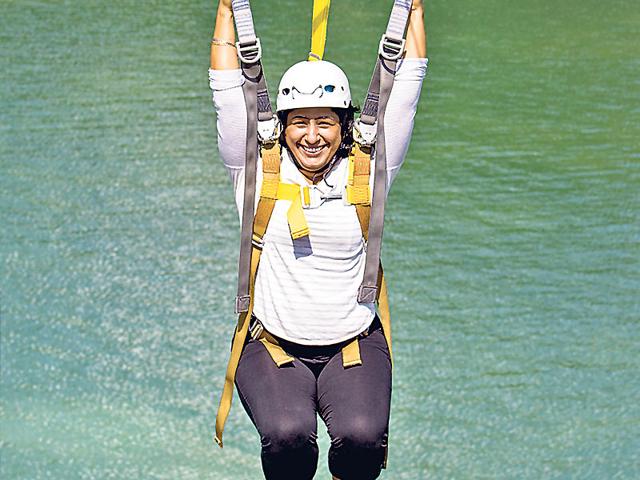Teachers in space
Teachers in outer space? What on earth will they do there? You’d be surprised at what many of them can manage to do - as was evident from a recent trip that 16 Indian teachers made to the US.
Teachers in outer space? What on earth will they do there? You’d be surprised at what many of them can manage to do - as was evident from a recent trip that 16 Indian teachers made to the US. Selected for their out-of-the-box teaching skills (to spend a week in the US. They joined about 200 teachers from around the world for the trip to Honeywell Educators @ Space Academy (HESA), an experience in partnership with the US Space and Rocket Centre (USSRC) that inspires teachers to encourage students to pursue science, technology, engineering and math (STEM) education and careers.

“We were expecting them to give us lesson plans and write-ups on how to use STEM education in classroom,” says Manisha Malhotra, a mathematics teacher from Delhi Public School, Sushant Lok.
What followed instead came as a pleasant surprise. From moon walking to designing a fireproof sheet to save astronauts, making a moon-lander and a Rover, purification of water (an essential part of environmental controls and life saving systems for the astronauts), the weeklong simulated space odyssey for these teachers taught them everything about space science. All the activities at the space centre promoted active learning and“research shows that active learning is much better recalled, enjoyed and understood,” says Bhagyam Shekar Ram, vice principal, National Public School, Bengaluru.
“I loved the challenge that required teachers to work in groups of five and create an ablative shield that prevents the shuttle from burning up during re-entry into the earth’s atmosphere. The activity required us to use the principles of conduction and insulation to design a shield (no thicker than 6 mm) which would prevent an egg kept on the other side of the shield from being cooked even if a propane torch was fired at it (the shield) from the other side for five minutes using various items. Each item cost a few credits and a team had to restrict themselves to 100 credits. This challenge can be thrown open to my students and I plan to include it in my plan when I teach the concepts of heat to my class 7 students,” says Pooja Sharma, a science teacher at Shiv Nadar School, Gurgaon. “We have got plenty of resources in the form of rocket activities which enhance scientific enquiry, critical thinking and problem-solving in learners,” says Subhashree Seetharamaier, Sri Vani International School, Bengaluru.
Malhotra now uses concepts related to rocket launches to teach topics like squares, square roots, linear equations, line graphs and decimals. She now plans to teach Pythagoras theorem, triangles inequality, decimals, exponents and many more by posing mathematical problems faced by the scientists in developing programmes for rocket launches or calculating distance, time and temperature in different planets and satellites. Ram plans to train her fellow teachers to be able to reach out to as many students as possible through her experiences from this simulated expedition. Sahoo wants to “ignite the spirit of creative thinking among his students by connecting mathematical problems to real life situations and asking students to solve them,” while Sharma wants “to kindle in her students interest in space flight by talking to them about the future of space travel and exploration” in the coming days.











